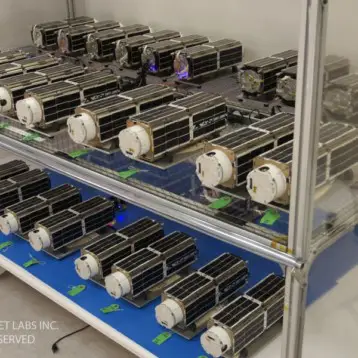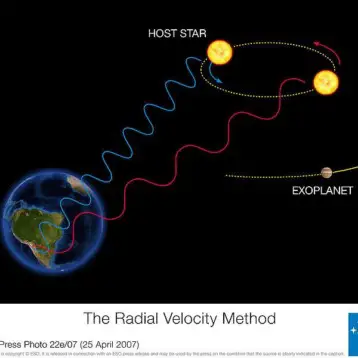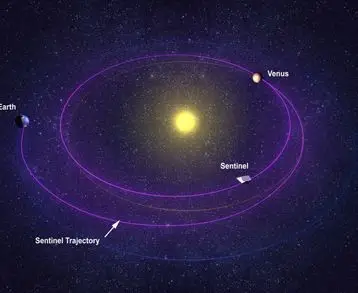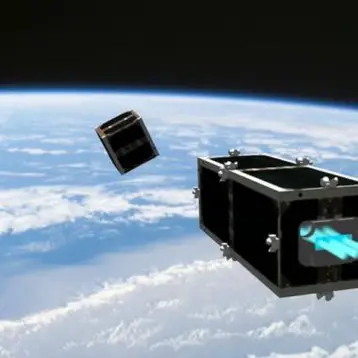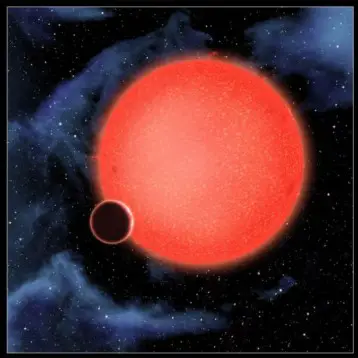|
Space travel has always been mankind’s dream. The 1969 historic moon landing brought the hope that soon we will be able to visit other planets in our solar system, but almost 40 years later this dream is still just that. Reaching Mars will require huge investments in and development of many new technologies. One of the biggest technological hurdles we shall need to surpass is the development of a cost-effective and practical propulsion system for a Mars-bound spaceship. Use of conventional chemical rockets, like the Saturn V that took the Apollo team to the Moon, is not practical since the new spaceship would have to carry too much fuel, making it expensive and complicated to lift into orbit. For this reason, a nuclear-powered engine has been suggested for the Mars mission.
Nuclear propulsion systems for rockets have been studied by NASA since the early 1960’s under the Nuclear Engine for Rocket Vehicle Application (NERVA) program, subsequently cancelled in 1972. In 2003, the nuclear space propulsion idea was revived by the Prometheus Project still under development. Although the nuclear propulsion option looks like a prime candidate for the future Mars mission, its disadvantages (mainly extreme radioactivity) led people like Dr. Gerald A. Smith, founder of Positronics Research in Santa Fe, New Mexico, to suggest a bold new alternative – antimatter. First predicted by the British physicist Paul Dirac in 1928 (and experimentally confirmed 4 years), antimatter is comprised of antiparticles that annihilate when they come in contact with ordinary particles, producing a burst of energy in the form of energetic photons. NASA’s Institute for Advanced Concepts (NIAC) recently funded Dr. Smith’s research to examine the potential applications of antimatter as a fuel for a manned mission to Mars.
Interview with Positronics Research
TFOT recently conducted an interview with Dr. Smith to learn more about the potential of positron-based space propulsion systems.
Q: Were you the first to come up with the idea for a positron-based propulsion system?
|
A:
The first positron engine was proposed by a German engineer, Eugen Saenger, in 1953. This was the classic photon rocket, but the photons (gamma rays) had to be made to reflect in order to give thrust. Unfortunately, there was no way to deflect the gamma rays, then or now. We are different in that we make the gamma rays interact, producing ablative residue, which generates thrust. Compared to antiprotons, positrons are very advantageous: no residual radioactivity, low energy gamma rays make for a compact engine (energy confinement is much simpler), and costs for making positrons are many orders of magnitude less (due to technology of electron accelerators versus proton accelerators). As for the original idea, I can say with 95% confidence that we were the first to tackle the real issues of positron propulsion. Saenger did the early work on dynamical computations of a true photon rocket, but did not deal with the real issues of how to get thrust out of his photons. Sanger deserves the credit for the “big idea”, we for solving the physics and engineering problems.Q: You mentioned that positrons emit less powerful gamma rays than antiprotons. Is the energy produced by positrons still sufficient for a useful propulsion system?
|
A: The energy of a single positron-electron annihilation is a factor of 1836 less than the energy of a single antiproton-proton annihilation. So, the energy per particle emitted in the annihilation is much less for positron annihilation. Combined with the constraints of conservation of momentum and energy, this leads to the result that positron-electron annihilation gives two gamma rays of equal energy, equal to 511 keV. Conversely, the antiproton-proton annihilation gives on average five particles, called pi-mesons, with an average energy of 367 MeV (1 MeV = 1000 keV). On average, 1.5 of the five mesons are neutral pi mesons, and each decays into two gamma rays. So, the average gamma ray energy is 367/2 or 183 MeV.
The low energy of the positron annihilation gamma rays make these very easy to contain and turn into propulsive energy. But, it takes 1836 times more positrons to get the same amount of energy as one antiproton. The antiproton annihilation energy is very hard to contain and turn into propulsive energy. In fact, the only way I know to use antiprotons is to make them create nuclear fission reactions in materials like uranium, which results in one of the nasty sides of nuclear fission, namely the presence of radioactive isotopes created by the engine.
Q: Can the positron engine perform liftoff or is it more like an ion engine, which can only be used in space?
A: Yes to the first question, and no to the second question. But, for many practical reasons we prefer for the first trials to assemble the spacecraft in LEO (low-earth orbit) and power it with positrons from LEO into space.
Q: Is this mainly a safety issue or are there other considerations?
A: It is partly a safety issue and partly an economic issue. 10 milligrams (mg) (a Mars mission) of positrons contains the energy of 428 tons of TNT. Or, to put it another way, 10 mg of positrons contains the energy of 23 external fuel tanks on the Space Shuttle. We would want to make sure that we know how to handle the positrons with utter confidence before attempting a liftoff from Earth. This would come with time. (Recall the early attempts to launch rockets from Earth in the 1920-1940’s with all the mishaps.) The other reason is economy. It takes a lot of energy to lift the spacecraft into LEO. We know how to do this with chemical fuels. It is much cheaper to put the parts of the spacecraft into LEO with chemical fuels than lift the whole thing into LEO using positrons.
Q: Would you describe in a few words the three positron-based propulsion concepts you have come up with, how they work, and what their main advantages and disadvantages are?
- Solid core – Energy is transferred to a propellant in tungsten metal matrix heated by annihilation gamma rays.
Advantages – Well understood technology.
Disadvantages – Performance limited by melting temperature of tungsten.
- Gas core – Energy is transferred to liquid/gas propellant directly heated by annihilation gamma rays.
Advantages – Improvement over solid core, not limited by melting temperature.
Disadvantages – Flowing multi-fluid is unstable at boundaries, may ionize and create plasma.
- Solid Ablation – Energy is transferred to a material that ablates off surface of a pusher plate.
Q: How do you intend to deal with the two major problems of antimatter propulsion systems – the creation of antimatter and finding a way to store it for long periods of time?
|
A: We are working on production of positrons in large quantities. We are getting a big boost from work being done for the International Linear Collider (ILC). The production rates required for the ILC are just a factor of 10-100 below those required for propulsion systems. Our company, Positronics Research LLC, has been working on storage for 5 years. We think we have found the pathway to long-term storage of large amounts of positrons. It involves making electrically neutral positronium (neutral atom of an electron and positron) atoms, then stabilizing them in magnetic and electric fields.
You cannot hold 10 mg of bare positrons in a magnetic trap. The “space charge” forces are enormous and the “positron plasma” blows itself apart. But, with electrically neutral atoms containing positrons, this is not a problem. Our work with positronium is on-going. My sponsors implore me to not discuss details at this time. Suffice it to say we have had some very encouraging results.
|
Q: Approximately how many positrons are needed for a trip to Mars and back, how much will the ILC produce in a year, and will we be able to boost production to the desired level?
A: Good question. 10 mg is equal to 1.1 x 1025 positrons. The ILC target numbers for production are in the 1015/sec range. So, it would take 1010 seconds to make 10 mg. Much too long. If the production rate can be increased by a factor of 100, it would take 108 seconds, or 3 years. I estimate the cost of production to be $250 million for 10 mg, after building a $1.5 billion accelerator system. This could all be done in 5-10 years.
Q: What is the time frame for a possible positron-based mission to Mars?








